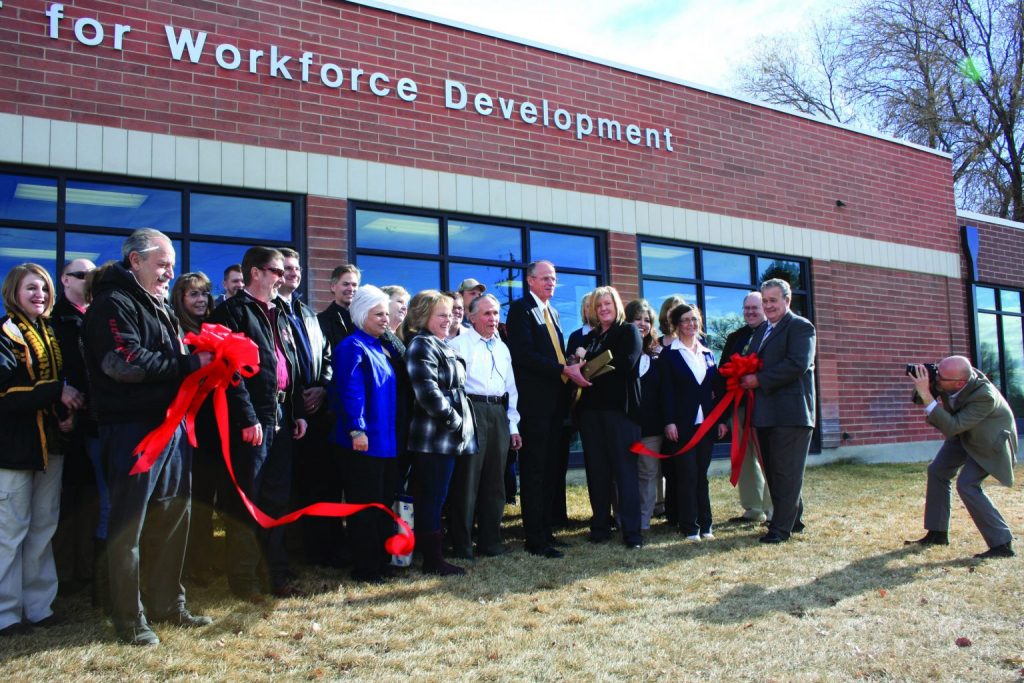Come one, come all: Center for Workforce Development officially open

This archived article was written by:
Developing an educational partnership with the community and businesses was the concept Chancellor Joe Peterson envisioned when the decision was made to turn USU Eastern’s Art Building on 400 north and 300 east into the Center for Workforce Development.
The 5,000 square foot building was remodeled into a state-of-the-art office space. Funding came from the Chancellor’s office, along with three sponsoring organizations: the Utah System of Higher Education, Division of Workforce Services, and the Governor’s Office of Economic Development. They reviewed the grants to assist in the cost of the renovation.
Two student advisers, the Small Business Development Center, Custom Fit Training, DWS and Vocational Rehab, Business Expansion and Retention, VISTA Outreach and Non-Credit Training Program Development and other agencies are housed either full time or part time in the facility.
Ethan Migliori, director of the non-credit training program will be working with students who want to continue their education by earning a traditional an associate’s degree or certificate. “We encourage students to go one more step than they thought they could to achieve an education.”
The target market for the center is unskilled workers, displaced workers or under employed workers. “We want our students to earn a sustainable family wage beginning at $30,000 or above after going through an educational program,” Russell Goodrich, associate vice chancellor for professional and technical education, said.
He hopes to work with the community to provide internships, specialized training programs, resources to start new businesses and support to help existing businesses grow and expand, a process referred to as “economic gardening.” Goodrich hopes USU Eastern students will look to the center as a central location to find an internship, obtain timely employment counseling, and get the training needed to get a great job that provides a life-sustaining wage.
There are two messages the college hopes to convey to the community with this center, Goodrich said. One, we offer quick training for immediate skills for employment. Two, we offer the community job training for employees, student workers for internships, and assistance in starting new businesses.
Migliori said the college trained 800-900 students fall semester in non-credit training. A few students continued to take matriculated college classes after they succeeded in the non-credit class program.
How important is educating students in the two counties? Migliori said Carbon and Emery counties are below the state average in residents who pursue and attain college degrees. He would like to change those numbers in the two counties to much higher percentages of college graduates.
Comparing Carbon and Emery counties in educational attainment against other counties in Utah, Migliori said the governor has set educational guidelines to challenge Utahns to get more education. In Carbon County, 13.2 percent of its residents have a bachelor’s degree or higher. In Emery County, 12.5 percent of its residents have a bachelor’s degree or higher.
Compare the two counties to the state of Utah who lists 29.9 percent of its residents who have a bachelor degree or higher.




